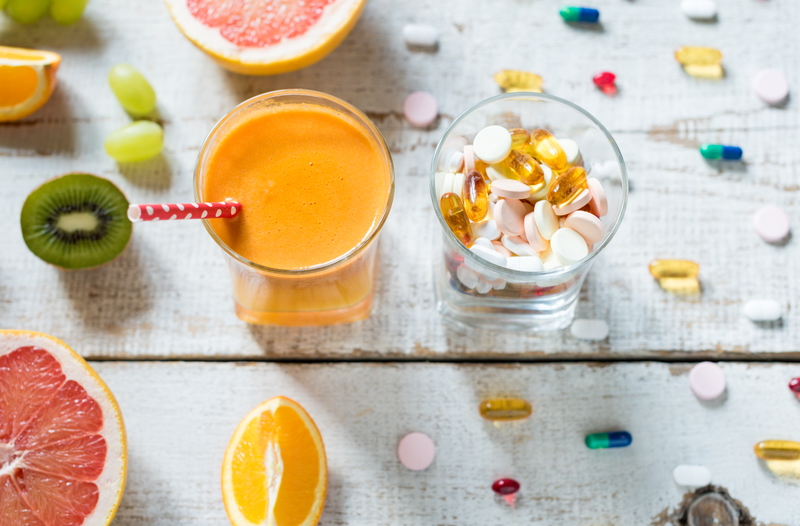Vitamin C is one of the most popular vitamin supplements taken by dancers internationally1, but this is a classic example of how a little of a vitamin is essential but excess is detrimental. Dancers need to know the facts around this popular supplement.
Vitamin C is prevalent in all fruits and vegetables, including the skins of baked potatoes. Papaya, cantaloupe, oranges, peppers and mango top the charts. Broccoli has even more than raspberries, surprisingly. It’s heat sensitive and will be somewhat reduced but not totally eliminated when foods are cooked. Everyone needs this essential vitamin. It plays a role in immune function, is a key antioxidant and impacts bone health, but it’s not a cure-all, and its reputation for preventing colds and flu is a bit overblown.
Current recommendations for athletes are 75-90mg per day. A large fresh orange has almost 65 mg by itself. A mango has over 100 mg. Dancers exposed to increased environmental stressors such as smog, exhaust from cars or environmental toxins would benefit from taking a bit more, up to 200mg. Other times when dancers might need a bit more would be when in a phase of substantially increased training, like going to a summer intensive or a hard week of shows. This is because vitamin C acts as an antioxidant, which means it helps buffer damage done to cells from reactive oxygen species (ROS). It helps prevent cell damage, particularly with white blood cells, which are a key part of the immune system. Vitamin C-containing foods (like those listed above) also contain many helpful phytonutrients, which synergistically support the immune system. So yes, vitamin C is very important to the immune system, but overall studies have been inconsistent in investigating claims that it prevents colds and flu or reduces the duration of illness. It might reduce duration by a day or two, but dancers would be better off taking vitamin D3 and probiotics, eating lots of fresh fruits and vegetables, and getting plenty of sleep if they are trying to prevent illness.
Diets high in foods with antioxidants such as vitamin C and vitamin E, for example, have been shown to reduce oxidative stress markers (including inflammatory biomarkers) in trained athletes, but even those studies called 450 mg of vitamin C a “high” dietary amount, and that was given to the athletes in food over a full day, not in one supplemental dose2. Some of the supplements on the market provide 1000 mg or more in one dose. This is excessive and not helpful. Mega doses could be perceived by the body to be an avalanche of vitamin C in the form of ascorbic acid. It can compromise bone health by accidentally encouraging the body to excrete calcium (a base) from the bones idn order to buffer the overload of ascorbic acid (a form of vitamin C).
Vitamin C and athletic performance
“Vitamin C during periods of heavy exertion and zinc lozenges at the onset of symptoms may be useful [to prevent illness], but high doses of single antioxidants, particularly vitamins C and E, may blunt exercise-induced training adaptations”3. Regular amounts of vitamin C can improve performance because it helps increase iron absorption from food. Female dancers often have low iron status, so eating vitamin C-rich foods with your iron-rich foods like beans and leafy greens will boost absorption. Other ways it can help dancers is by possibly reducing muscle soreness. However, eating a fruit- and vegetable-rich diet does that beautifully, so it’s possible that vitamin C is a helper and not the main variable for reducing muscle soreness. Since dancers are at higher than average risk for stress fractures and low bone mineral density, they should be aware of the role that vitamin C plays in collagen formation and bone health. Here again, a little is essential, but too much is bone compromising.
The bottom line is that vitamin C isn’t a miracle cure for colds and flu, but moderate, regular doses from foods can positively impact a dancer’s health and immune function.
 By Emily C. Harrison MS, RD, LD of Nutrition for Great Performances.
By Emily C. Harrison MS, RD, LD of Nutrition for Great Performances.
Emily Cook Harrison MS, RD, LD
Emily is a registered dietitian and holds both a bachelor’s and master’s degree in nutrition from Georgia State University, USA. Her master’s thesis research was on elite level ballet dancers and nutrition and she has experience providing nutrition services for weight management, sports nutrition, disordered eating, disease prevention, and food allergies. Emily was a professional dancer for eleven years with the Atlanta Ballet and several other companies. She is a dance educator and the mother of two young children. She now runs the Centre for Dance Nutrition and Healthy Lifestyles. She can be reached at emily@dancernutrition.com
www.dancernutrition.com
Sources:
- Brown C, et al. An international study on dietary supplementation use in dancers. Med Probl Perform Art. 2014
- Schneider CD, et al.Comparison of the effects of two antioxidant diets on oxidative stress markers in triathletes. Biol Sport 2018. www.ncbi.nlm.nih.gov/pmc/articles/PMC6234303
- Maughan RJ, et al.IOC consensus statement: dietary supplements and the high performance athlete. British Jrn Sports Med. 2018.















